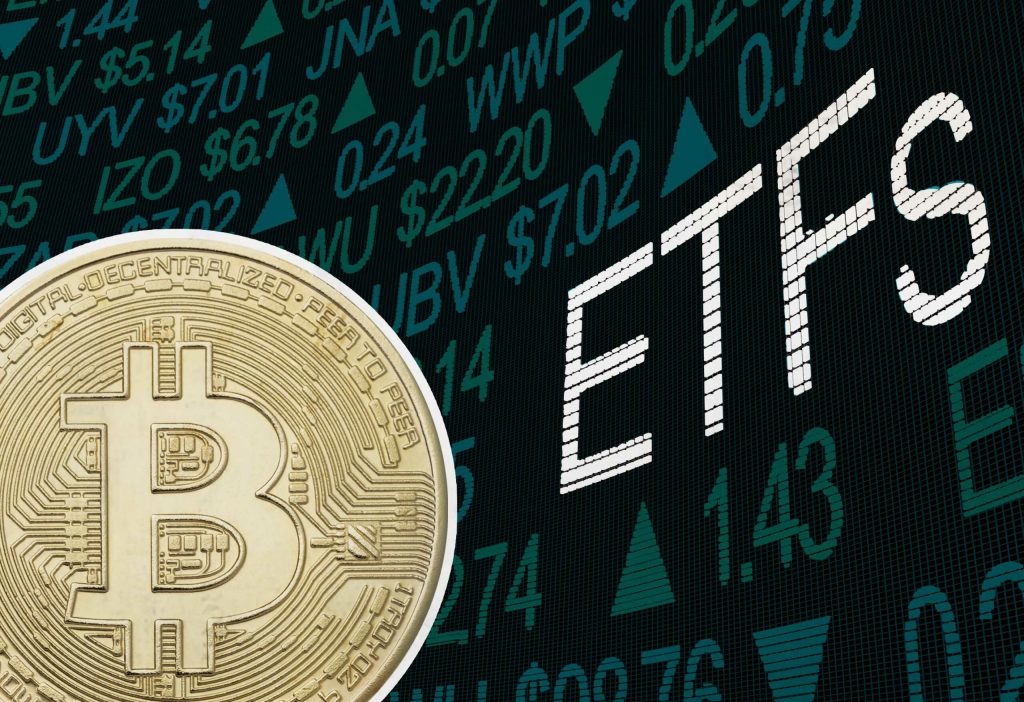Cryptocurrencies began as a grassroots, decentralized experiment—a rebellion against centralized finance. For years, Bitcoin and Ethereum thrived on peer-to-peer adoption, underground forums, and speculative retail trading. Yet, as the market matured, it became impossible to ignore the growing demand for institutional-grade investment products tied to major coins. Today, exchange-traded funds (ETFs), exchange-traded notes (ETNs), and futures contracts are among the most influential vehicles connecting traditional finance (TradFi) with the digital asset world.
These products don’t just provide exposure; they redefine accessibility, liquidity, and risk management for investors. However, with new opportunities come new dangers, particularly those associated with derivatives. To truly understand how institutional products based on Bitcoin and Ethereum shape the financial ecosystem, we need to examine their mechanics, market impacts, and risks in detail.
Breaking Down BTC and ETH ETFs
Exchange-traded funds (ETFs) have become the poster child of institutional adoption in crypto. These funds allow investors to gain exposure to Bitcoin and Ethereum without directly holding or managing private keys, wallets, or navigating exchanges.
Spot ETFs
Spot ETFs track the current price of the underlying asset. For Bitcoin and Ethereum, spot ETFs hold the actual cryptocurrency (custodied by regulated providers) and issue shares that mirror the market price.
- Example: Bitcoin Spot ETFs – In early 2024, the U.S. approved multiple Bitcoin spot ETFs (including offerings from BlackRock and Fidelity), marking a milestone for mainstream adoption.
- Ethereum Spot ETFs – Approved later in 2024, these opened the door for broader institutional participation in Ethereum’s ecosystem.
Futures ETFs
Instead of holding the actual cryptocurrency, futures ETFs are based on derivatives contracts traded on regulated exchanges like the Chicago Mercantile Exchange (CME). These contracts speculate on the future price of BTC or ETH, and the ETF tracks the performance of these contracts rather than the asset itself.
- Bitcoin Futures ETFs were the first to gain approval in the U.S. (e.g., ProShares Bitcoin Strategy ETF in 2021).
- While they brought accessibility, futures ETFs often suffer from contango effects—a phenomenon where rolling futures contracts leads to losses compared to spot price performance.
ETFs and Investor Behavior
For retail and institutional investors alike, ETFs lower barriers to entry. They eliminate concerns around self-custody, security breaches, or regulatory gray zones. This convenience comes with trade-offs, though:
- Investors lose the benefits of directly holding crypto (such as using ETH for staking or DeFi).
- Fees, though often small, accumulate over time.
- ETFs centralize crypto custody into a few large institutions, potentially undermining decentralization.
ETNs: A Different Path to Exposure
Exchange-traded notes (ETNs) are another institutional product tied to cryptocurrencies. Unlike ETFs, which represent shares in a fund, ETNs are debt instruments issued by financial institutions. Their returns are linked to the performance of the underlying asset—in this case, BTC or ETH.
Characteristics of ETNs
- Issuer-backed: ETNs are unsecured debt, meaning the investor’s returns depend on the issuer’s solvency. If the issuer defaults, investors may lose everything.
- Tax efficiency: In some jurisdictions, ETNs may provide tax advantages compared to ETFs.
- Accessibility: ETNs can trade on traditional exchanges like any stock or bond, making them highly accessible.
Crypto ETNs in Practice
European markets, especially Germany and Sweden, have embraced ETNs tied to Bitcoin and Ethereum. Products like the XBT Provider ETNs allow investors to buy BTC and ETH exposure through traditional brokerage accounts.
ETNs offer flexibility and simplicity but come with significant counterparty risk. Unlike ETFs, where the underlying asset is often held in custody, ETNs rely on the financial health of the issuing institution.
Futures: The Gateway to Derivatives
Futures contracts are perhaps the most transformative institutional product in the crypto market. They allow investors to speculate on the future price of BTC and ETH, hedge existing positions, and gain leveraged exposure.
Mechanics of Bitcoin and Ethereum Futures
A futures contract is an agreement to buy or sell the asset at a predetermined price on a future date. On exchanges like CME, BTC and ETH futures are cash-settled—no actual crypto changes hands. Instead, profits and losses are settled in cash.
Why Futures Matter
- Liquidity: Futures trading has significantly boosted market liquidity, attracting institutional capital.
- Price discovery: Futures markets often shape spot price movements, signaling market sentiment.
- Hedging: Miners, institutional investors, and funds use futures to hedge against volatility.
Challenges of Futures
- Leverage risk: Futures allow traders to amplify exposure with borrowed funds. While this increases profit potential, it magnifies losses and can trigger liquidations.
- Complexity: Futures require a higher level of financial sophistication compared to spot investments.
- Market manipulation: Futures markets can influence spot prices, raising concerns about excessive speculation.

Impact on Accessibility and Liquidity
The arrival of ETFs, ETNs, and futures has transformed how investors access Bitcoin and Ethereum.
For Retail Investors
- Ease of access: Buying BTC or ETH exposure through an ETF is as simple as purchasing a stock on a brokerage app.
- Regulatory reassurance: ETFs and ETNs are regulated financial products, giving investors confidence in compliance and oversight.
For Institutions
- Liquidity and scale: Institutional players can now allocate billions into BTC and ETH without worrying about custody or liquidity constraints.
- Integration with TradFi systems: Futures and ETFs integrate smoothly into existing risk management, reporting, and portfolio allocation frameworks.
For the Crypto Market
- Increased liquidity: Institutional products attract large volumes, stabilizing order books and reducing volatility.
- Legitimization: Products like spot ETFs signal mainstream acceptance, bringing crypto closer to traditional finance.
- Centralization concerns: The concentration of BTC and ETH custody in large custodians raises questions about systemic risk.
Risks Tied to Derivatives
While institutional products offer accessibility and liquidity, they also introduce risks that differ from direct crypto ownership.
Derivative-Specific Risks
- Contango and backwardation – In futures ETFs, rolling contracts can lead to consistent underperformance relative to spot prices.
- Leverage exposure – Futures allow highly leveraged bets, which can amplify losses and destabilize markets.
- Counterparty risk – ETNs depend on the solvency of issuers, making them riskier during times of financial stress.
Market-Level Risks
- Detachment from underlying crypto principles: Institutional products emphasize speculation and financialization, distancing crypto from its decentralized ethos.
- Systemic risk: A failure of a major ETF or ETN issuer could ripple through both crypto and traditional markets.
- Regulatory tightening: As these products grow, regulators may impose stricter rules, potentially reducing flexibility.
Conclusion: Are Institutional Products a Gateway or a Trap?
Institutional products like ETFs, ETNs, and futures have undeniably reshaped the landscape for Bitcoin and Ethereum. They have broadened access, deepened liquidity, and legitimized digital assets in the eyes of mainstream investors. For many, they represent a gateway to crypto participation without the technical and security hurdles of direct ownership.
At the same time, these products carry risks that investors must not overlook. From derivative pitfalls to counterparty risks, institutional adoption can introduce fragility into an ecosystem once defined by decentralization and resilience.
The key lies in balance. Used wisely, ETFs, ETNs, and futures can complement direct crypto ownership, allowing both retail and institutional investors to benefit from the best of both worlds. But blind reliance on financialized products risks missing the essence of crypto’s original mission: empowerment through true ownership.

























